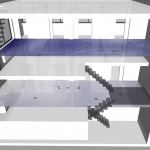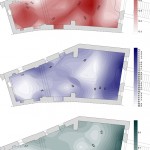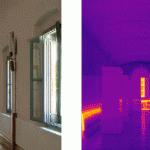The LADC deals with the conservation project and investigates the history of construction, use and deterioration of architectural heritage. The techniques of archaeology of architecture, documentary research and non-destructive diagnostics are used within a context of multidisciplinary collaboration. The lab is open to the students of the Master program, the Graduate School in Architectural and Landscape Heritage, the PhD Programm in Preservation of the Architectural Heritage and for an Internship.
LADC is part of the interdepartmental laboratory CECH
The CECH Laboratory (Climate and Energy for Cultural Heritage) is a cooperation platform between the Department of Architecture and Urban Studies (DAStU) and the Department of Energy of Politecnico di Milano. The specific competences of different laboratories and research groups working in the two departments (Laboratorio di analisi e diagnostica del costruito, AIRLAB research group and Laboratorio di Fisica Tecnica e Impianti per i Beni Culturali) have been combined in order to improve expertise and to promote innovative research in the topics of preventive conservation, indoor climate monitoring and energy efficiency in the field of cultural heritage. The cooperation may include agreements on specific projects with other departments of Politecnico di Milano (Department of Architecture, Built environment and Construction engineering – ABC, Department of Civil and Environmental Engineering – DICA).
Historic structures involve considering specific objectives and restrictions which limit considerably the range of possible interventions; the aim of CECH Laboratory is to develop innovative solutions for measuring the energy potential of heritage structures, fostering minimum-impact but effective interventions for indoor climate control.
In detail, the competences of CECH Laboratory include:
- – The analysis and characterization of hygrothermal properties of historic materials, structures and buildings, aiming at their own preservation as well as at the preventive conservation of cultural heritage and museum objects.
- – Measuring of the air flow rate, air infiltrations and air permeability of the building envelop, including measuring contaminants and pollutants and analysis of the indoor air quality.
- – Monitoring, assessment and optimization of the building-structure interface and of the building-Heating, Ventilation, Air-Conditioning (HVAC) interface, with specific attention paid to transmittance and thermal capacity measures, retrofit of existing systems and natural ventilation, testing of innovative materials and solutions for energy efficiency.




